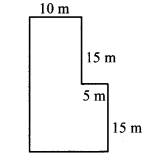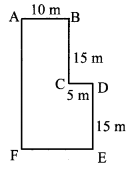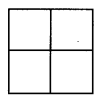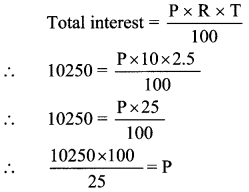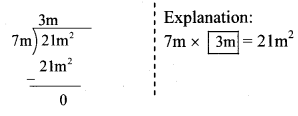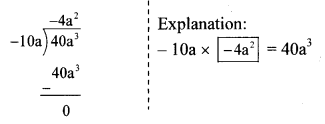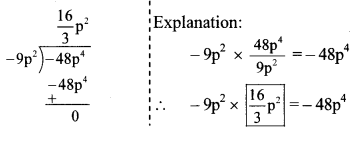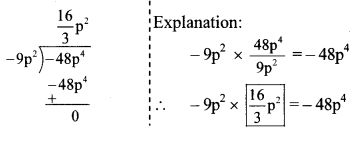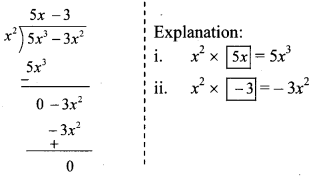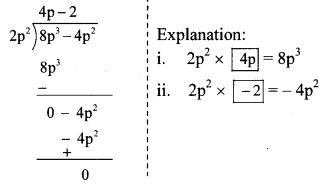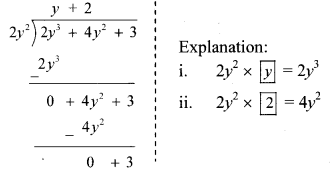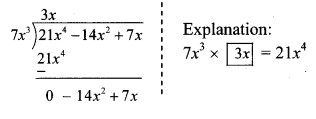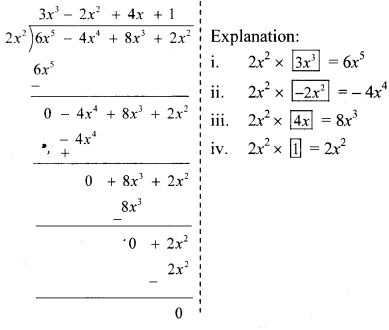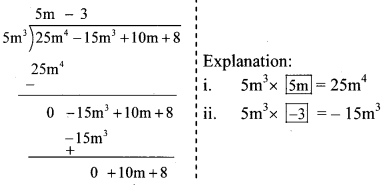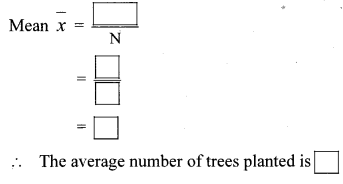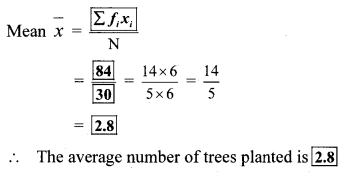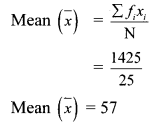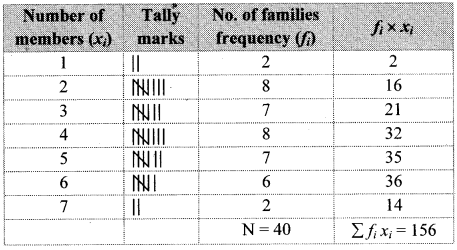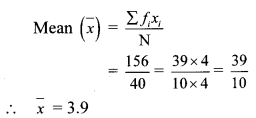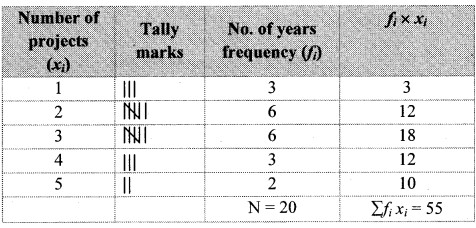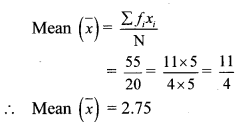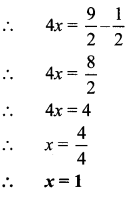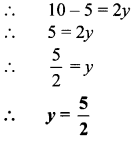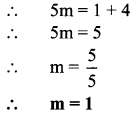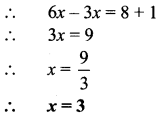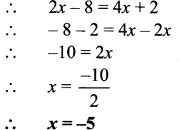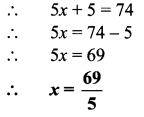Balbharti Maharashtra State Board Class 7 Maths Solutions covers the 7th Std Maths Practice Set 42 Answers Solutions Chapter 11 Circle.
Circle Class 7 Practice Set 42 Answers Solutions Chapter 11
Question 1.
Complete the table below:
| Sr. No | Radius (r) | Diameter (d) | Circumference (c) |
| i. | 7 cm | ||
| ii. | 28 cm | ||
| iii. | 616 cm | ||
| iv. | 72.6 cm |
Solution:
i. Radius (r) = 7 cm
Diameter (d) = 2r
= 2 x 7 = 14 cm
Circumference (c) = πd
= \(\frac { 22 }{ 7 }\) x 14
= 44 cm
ii. Diameter (d) = 28 cm
Radius (r) = \(\frac{d}{2}=\frac{28}{2}\) = 14 cm
Circumference (c) = πd
= \(\frac { 22 }{ 7 }\) x 28
= 88 cm
iii. Circumference (c) = 616 cm
∴ πd = 616
∴ \(\frac { 22 }{ 7 }\) x d = 616
∴ d = 616 x \(\frac { 7 }{ 22 }\)
∴ d = 196 cm
∴ Diameter (d) = 196 cm
Radius (r) = \(\frac{\mathrm{d}}{2}=\frac{196}{2}\) = 98 cm
iv. Circumference (c) = 72.6 cm
∴ πd = 72.6
\(\frac { 22 }{ 7 }\) x d = 72.6
∴ \(d=72.6 \times \frac{7}{22}=\frac{726}{10} \times \frac{7}{22}=\frac{33 \times 7}{10}\)
∴ d = 23.1 cm
∴ Diameter (d) = 23.1 cm
Radius (r) = \(\frac{\mathrm{d}}{2}=\frac{23.1}{2}\)
= 11.55 cm
| Sr. No | Radius (r) | Diameter (d) | Circumference (c) |
| i. | 7 cm | 14 cm | 44 cm |
| ii. | 14 cm | 28 cm | 88 cm |
| iii. | 98 cm | 196 cm | 616 cm |
| iv. | 11.55 cm | 23.1 cm | 72.6 cm |
Question 2.
If the circumference of a circle is 176 cm, find its radius.
Solution:
Circumference (c) = 176 cm
∴ 2πr = 176
∴ 2 x \(\frac { 22 }{ 7 }\) x r = 176
∴ \(\frac { 44 }{ 7 }\) x r = 176
∴ r = 176 x \(\frac { 7 }{ 44 }\) = 28 cm
∴ The radius of the circle is 28 cm.
Question 3.
The radius of a circular garden is 56 m. What would it cost to put a 4-round fence around this garden at a rate of 40 rupees per metre?
Solution:
Radius of the circular garden (r) = 56 m
∴ Circumference of the circular garden (c) = 2πr
= 2 x \(\frac { 22 }{ 7 }\) x 56
= 352 m
∴ Length of the wire required to put 1-round fence = Circumference
∴ Length of wire required to put a 4-round fence = 4 x Circumference
= 4 x 352
= 1408 m
∴ Cost of wire per meter = Rs 40
∴ Total cost = length of wire required x cost of the wire
= 1408 x 40
= Rs 56320
∴ The cost to put a 4-round fence around the garden is Rs 56320.
Question 4.
The wheel of a bullock cart has a diameter of 1.4 m. How many rotations will the wheel complete as the cart travels 1.1 km?
Solution:
Diameter of the wheel of the bullock cart (d) = 1.4 m
Circumference of the wheel of the bullock cart (c) = πd
\(=\frac{22}{7} \times 1.4=\frac{22}{7} \times \frac{14}{10}=\frac{44}{10}=4.4 \mathrm{m}\)
Distance covered in 1 rotation = Circumference of the wheel
= 4.4 m

∴ The wheel of the bullock cart will complete 250 rotations as the cart travels 1.1 km.
Maharashtra Board Class 7 Maths Chapter 11 Circle Practice Set 42 Intext Questions and Activities
Question 1.
Identify the radii, chords and diameters in the circle alongside and write their names in the table below: (Textbook pg. no. 75)
| i. Radii | |
| ii. Chords | |
| iii. Diameters |
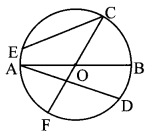
Solution:
i. OA, OB, OC, OF
ii. EC, AD, AB, FC
iii. AB, FC
